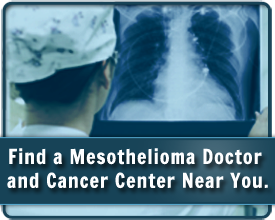Wow… What is Mesothelioma Symptoms, Causes, Type, Diagnosis
This article explain what is mesothelioma symptoms, causes,
type, diagnosis and more, may be you need it for to know. Mesothelioma is a rare form of cancer that develops from
cells of the mesothelium, the protective lining that covers many of the
internal organs of the body.
 |
| What
is Mesothelioma Symptoms, Causes, Type, Diagnosis sources: https://en.wikipedia.org/wiki/Mesothelioma |
What is Mesothelioma Symptoms
Mesothelioma develops so slowly that a person can have it
and not know that they have it. The first symptoms might be shortness of
breath, chest pain, fever, cough, nausea, pain in abdomen, or anemia. All of
these symptoms are also caused by less serious illnesses, so it is difficult to
recognize the disease in its early stages. If you have worked with or been
exposed to asbestos you should get screened, even if you don’t feel sick.
Mesothelioma is more treatable when diagnosed early.
What Parts of Body
Affected
The body cavity linings affected by mesothelioma are the:
Pleura — around
the lungs (about 75% of mesothelioma cases)
Peritoneum —
around the stomach
Pericardium —
around the heart
The pleura, peritoneum, and pericardium are thin membranes
made up of a type of tissue called mesothelium, which in turn is made up of a
type of cell called mesothelial cells. Mesothelioma is a cancer of the
mesothelial cells.
What Types of Mesothelioma
Mesothelioma is diagnosed as one of three different cell
types:
Epithelioid mesothelioma
— about 70% of mesothelioma cases, has the best prognosis or outlook
Sarcomatoid
mesothelioma — about 15% of cases
Mixed or biphasic
mesothelioma — about 15% of cases
Each year in the United States, about 2500 people discover
that they have mesothelioma, and almost every one of them remembers being
exposed to asbestos. Almost all cases of mesothelioma are linked to asbestos
exposure. It usually takes between 10 and 40 years to develop mesothelioma
after being exposed to asbestos, so asbestos is especially dangerous to
children. The younger the person is at the time of asbestos exposure, the
higher their risk for developing mesothelioma.
What Prognosis of
Mesothelioma
New treatments have been remarkably successful in some
cases, but mesothelioma is still known as a disease that spreads quickly and is
usually fatal. If you have or think you might have mesothelioma, early
detection and screening are the best way to preserve your quality of life for
as long as possible.
What Affects the
Prognosis
The potential for any treatment to be successful, and the
survival time of the patient, depends on a variety of factors including:
Overall health and age of the patient :
Type of tumor
Size of tumor
Location of tumor
— particularly if it is near a vital organ such as the heart
Lymph system
involvement — lymph cells are immune system cells that fight infection and
disease
Metastases —
tumor spreading to other organs or bones
To
determine whether a person has mesothelioma, doctors may use one or more of
these diagnostic methods:
Chest X ray
CAT scan — CT or Computerized Tomography
MRI — Magnetic Resonance Imaging
PET scan — Positron Emission Tomography
PFT — Pulmonary Function Test
Transbronchial biopsy — A flexible, lighted scope is passed down the trachea to the bronchi area of the lungs.
Thoracotomy — During surgery, the chest is opened and examined, usually between two of the lower ribs on one side.
Thoracoscopy — A thoracoscope with a video camera is sent through an incision between the ribs.
Centesis — Pleural, peritoneal, or pericardial fluid is drained and evaluated. This technique is used both for diagnosis and to relieve pressure, pain, and fullness in the chest or abdominal areas.
CAT scan — CT or Computerized Tomography
MRI — Magnetic Resonance Imaging
PET scan — Positron Emission Tomography
PFT — Pulmonary Function Test
Transbronchial biopsy — A flexible, lighted scope is passed down the trachea to the bronchi area of the lungs.
Thoracotomy — During surgery, the chest is opened and examined, usually between two of the lower ribs on one side.
Thoracoscopy — A thoracoscope with a video camera is sent through an incision between the ribs.
Centesis — Pleural, peritoneal, or pericardial fluid is drained and evaluated. This technique is used both for diagnosis and to relieve pressure, pain, and fullness in the chest or abdominal areas.
What Treatment of Mesothelioma
There
is no certain cure for malignant mesothelioma, but medical researchers have
recently developed procedures that can slow the progress of the disease and
extend, with quality, the lives of some of those suffering from it.










